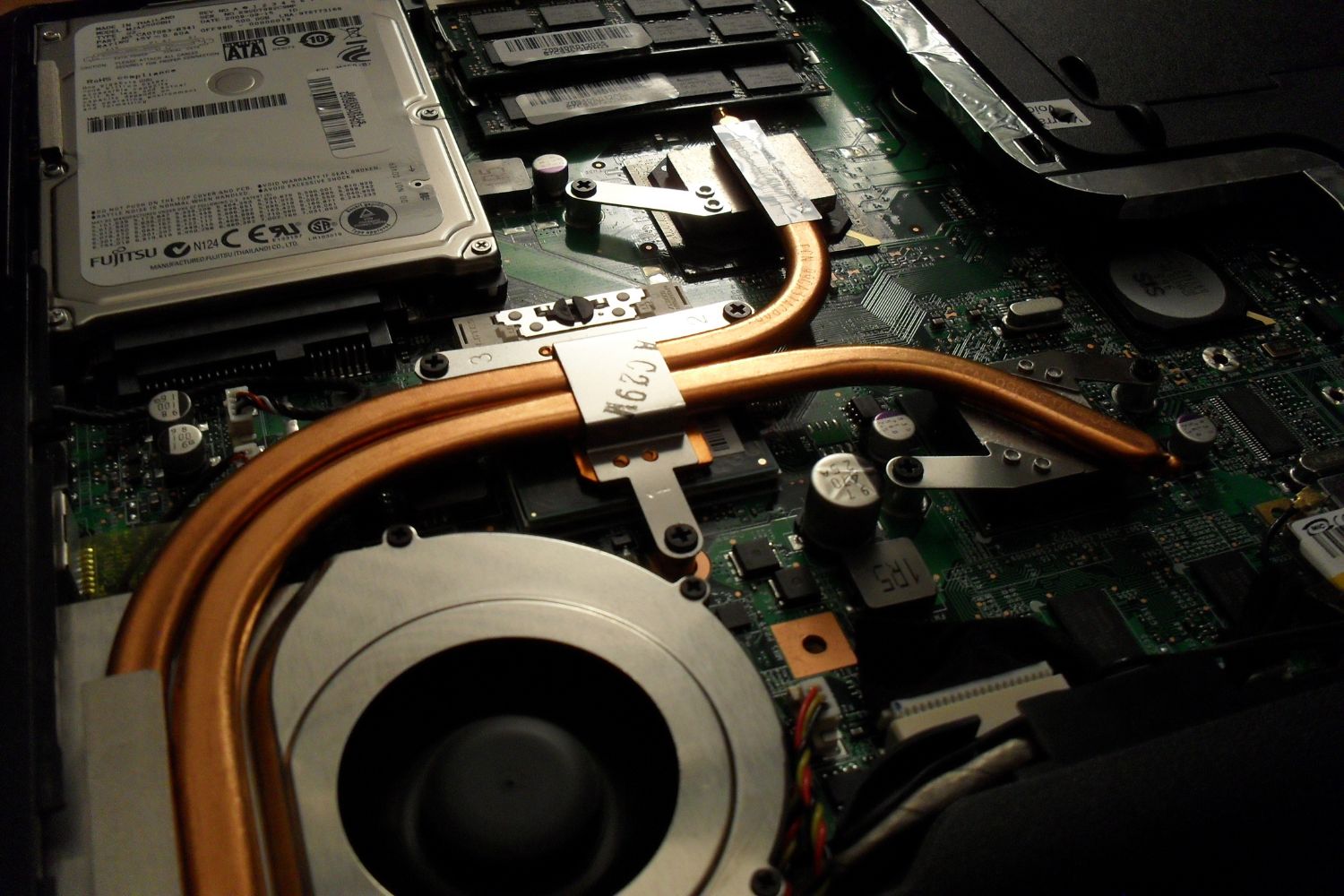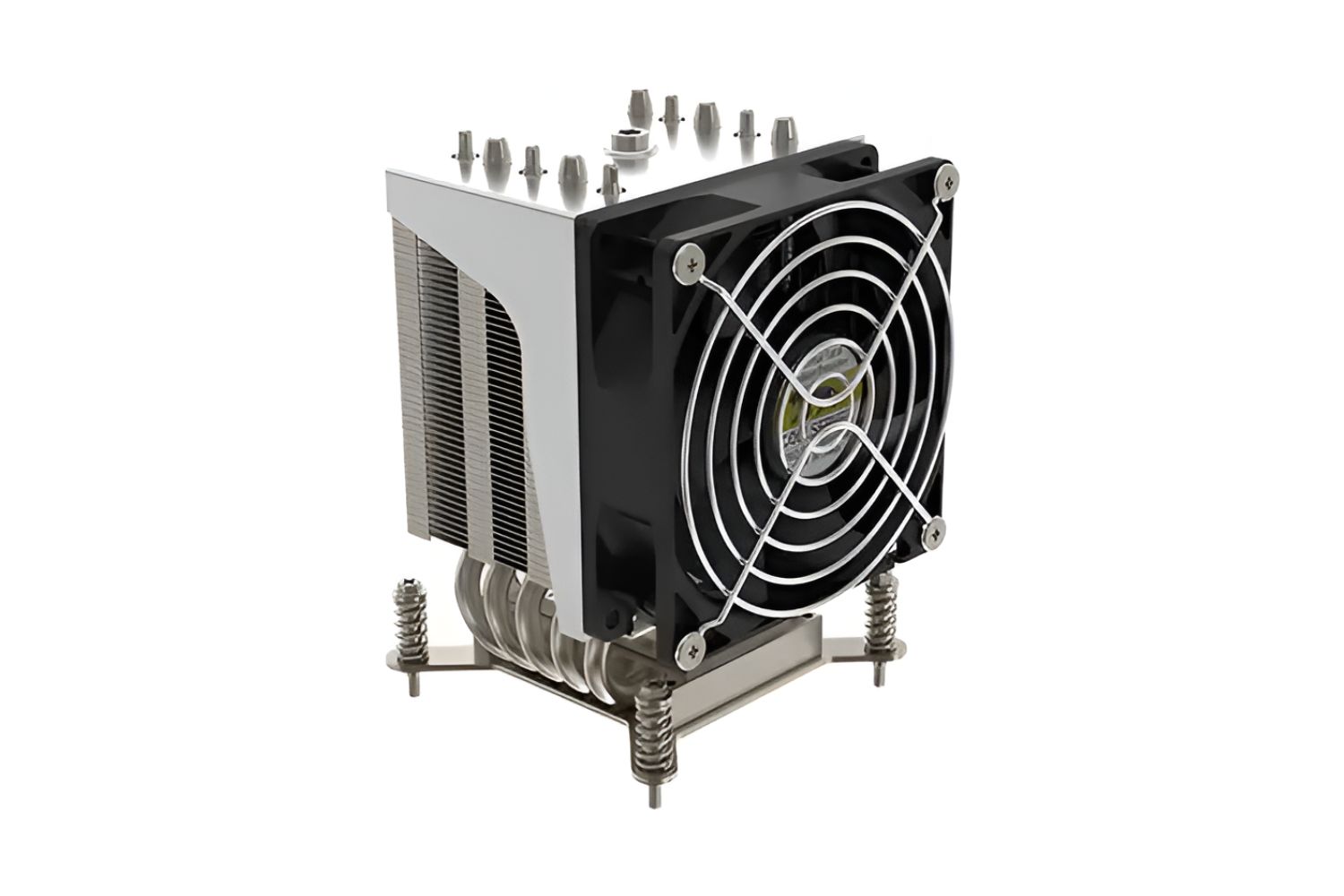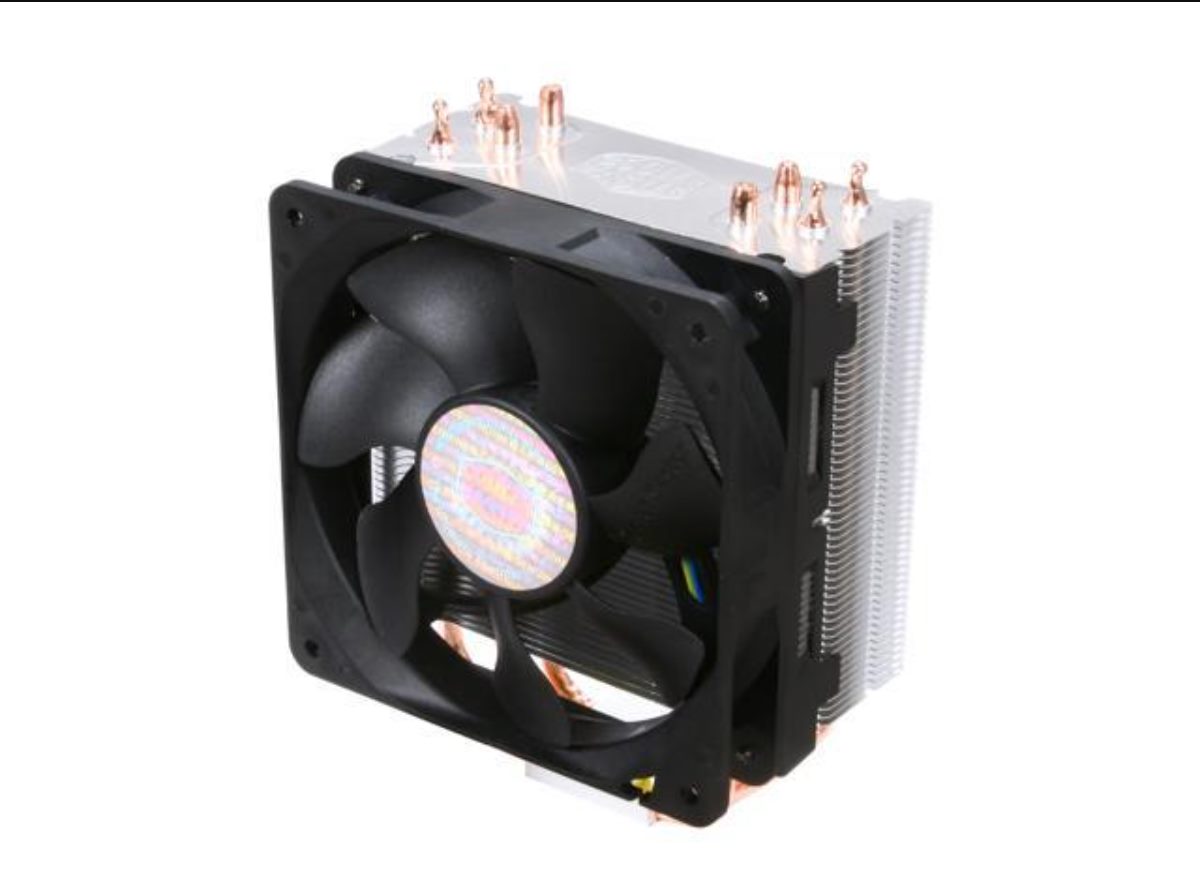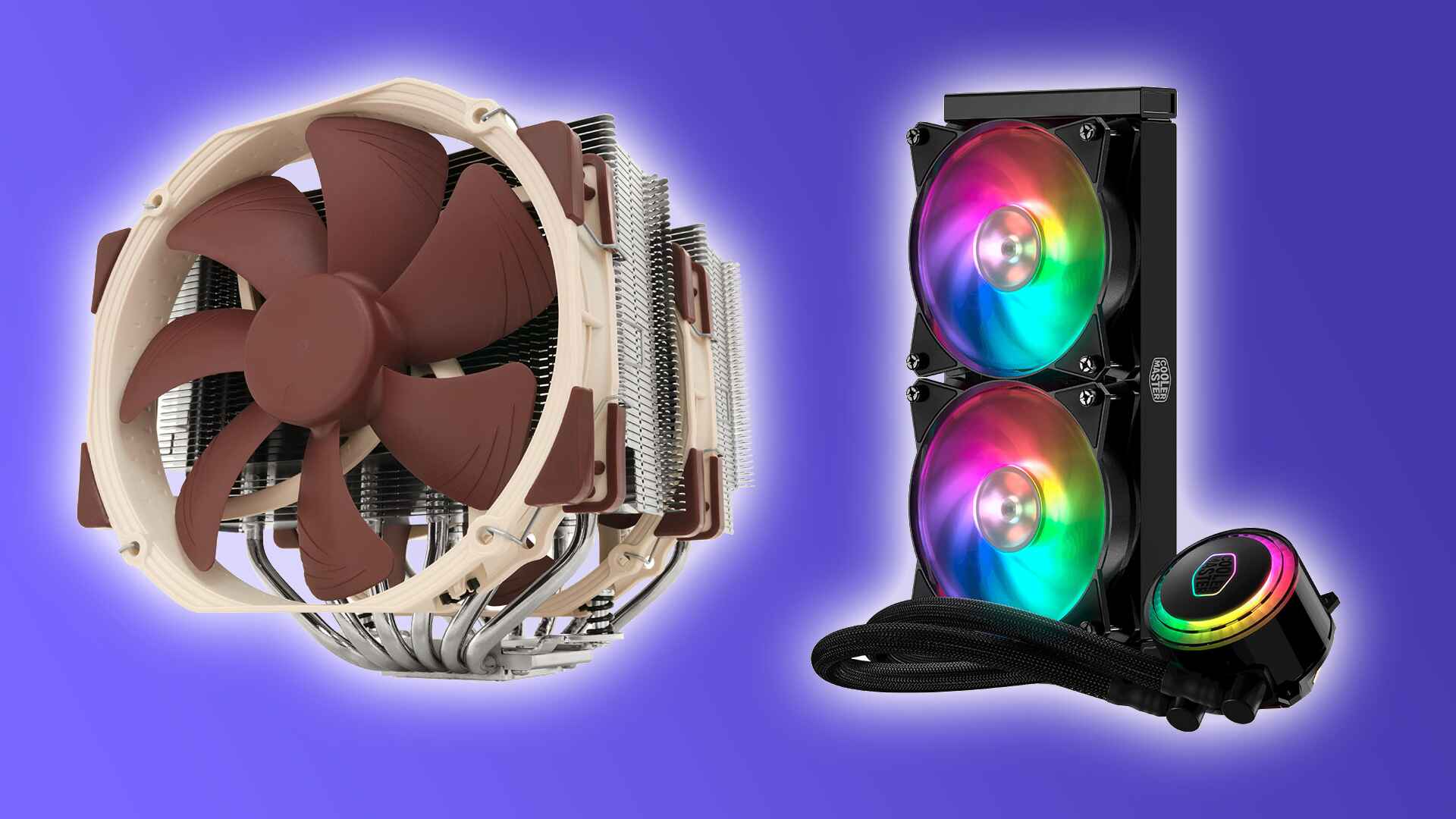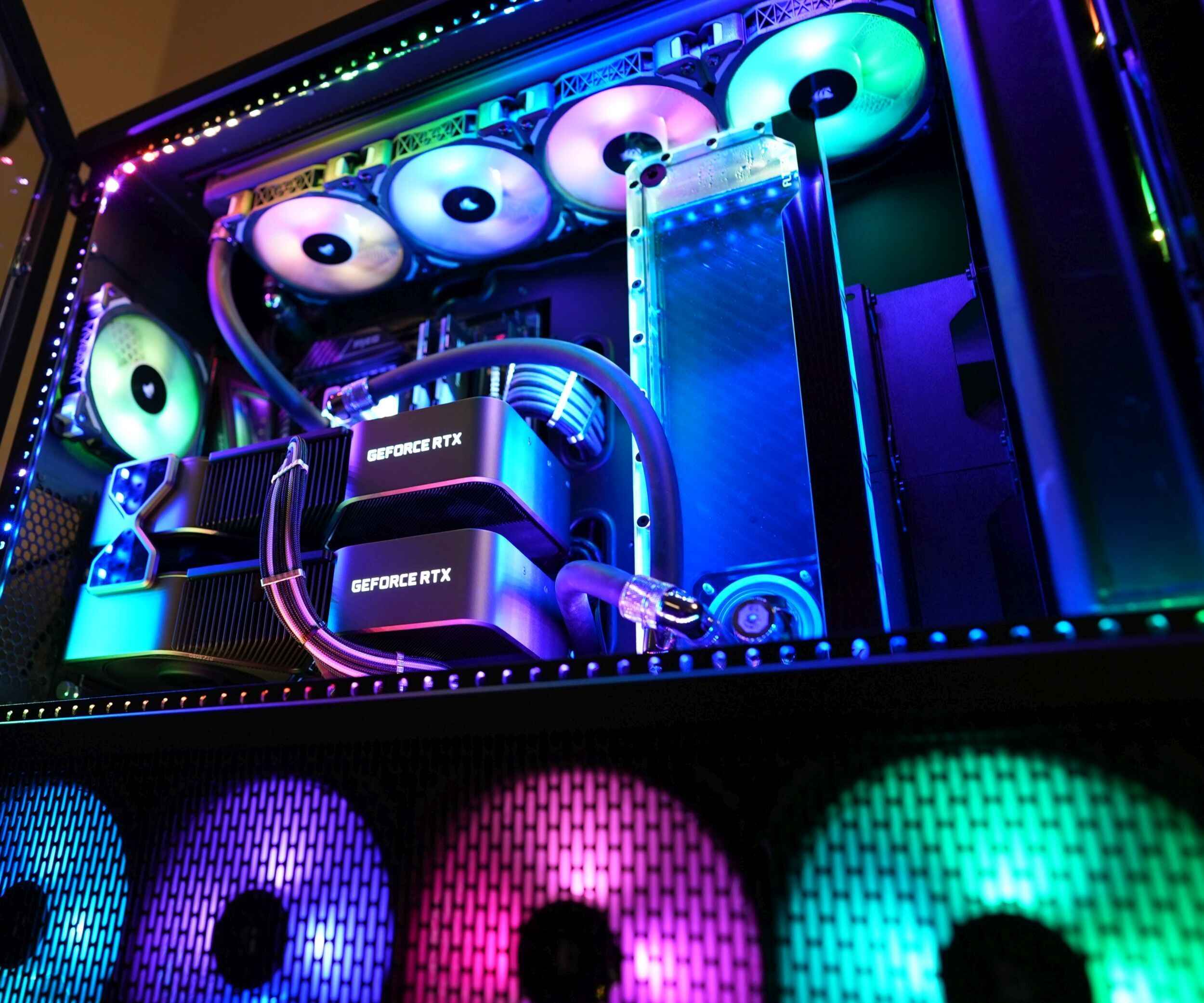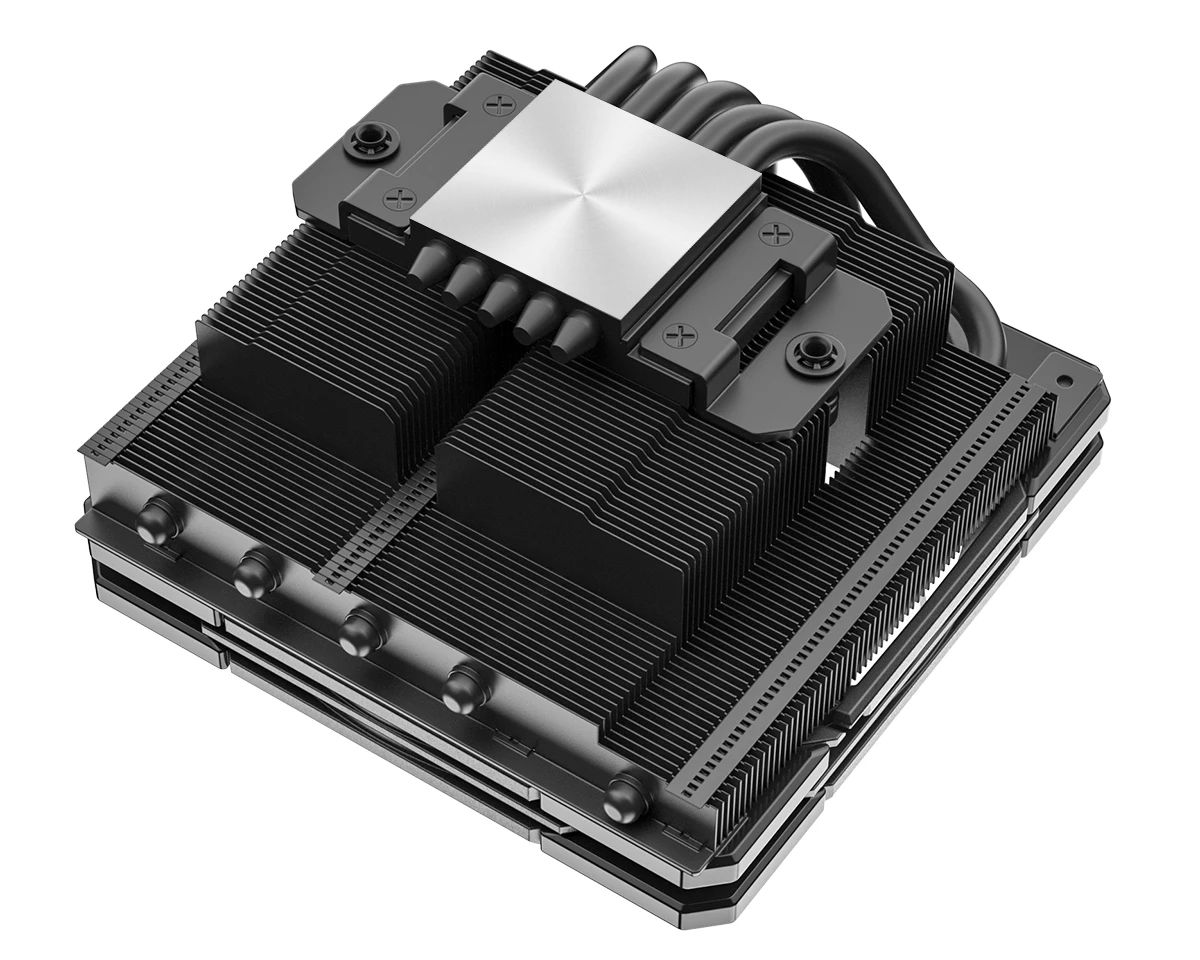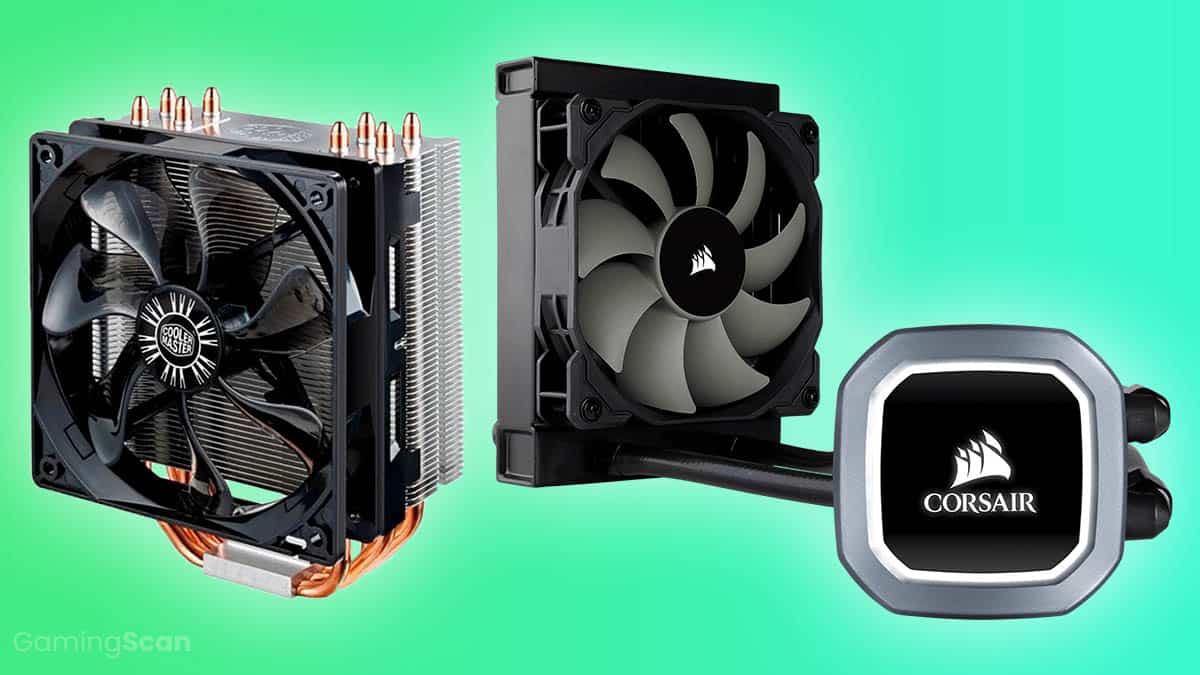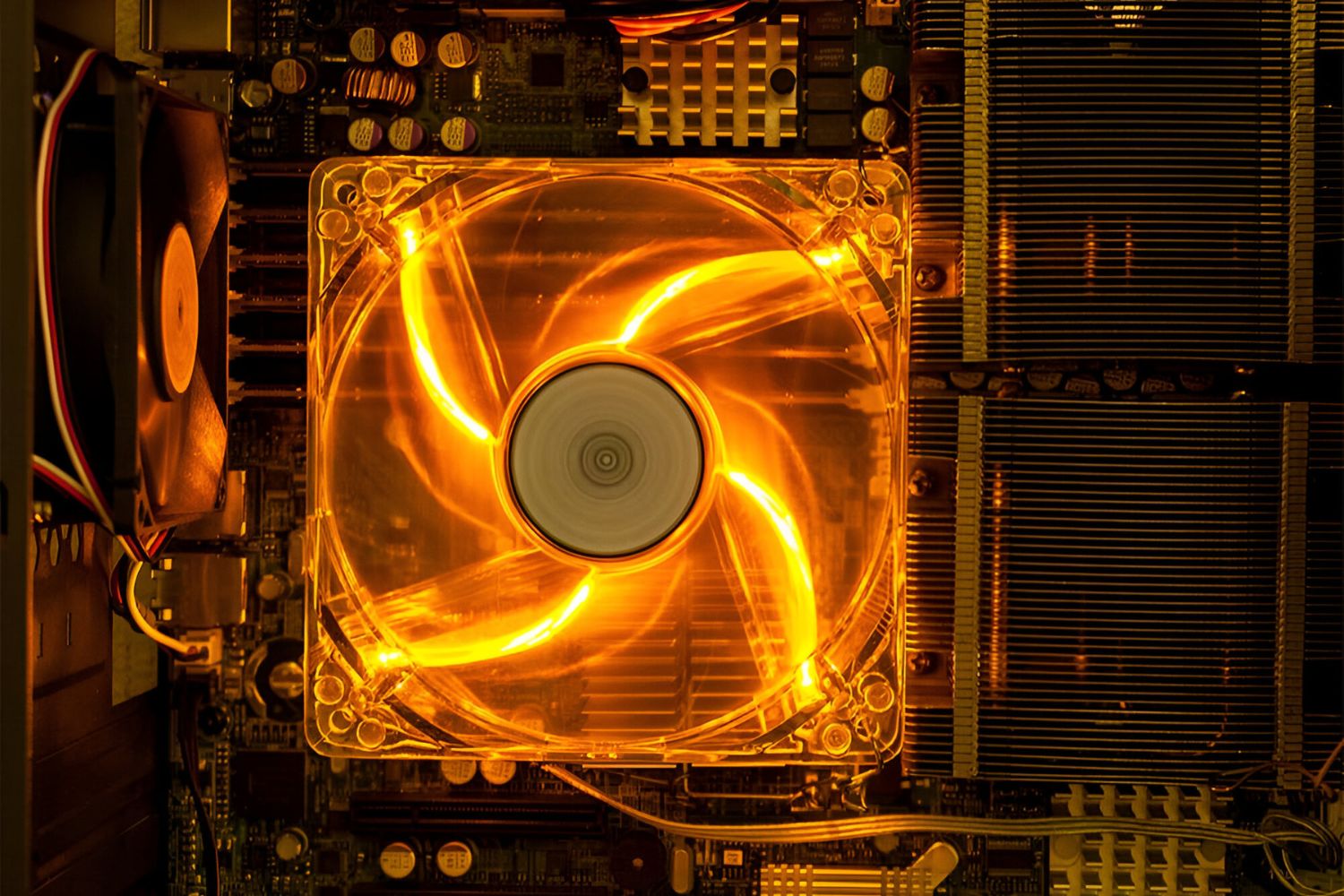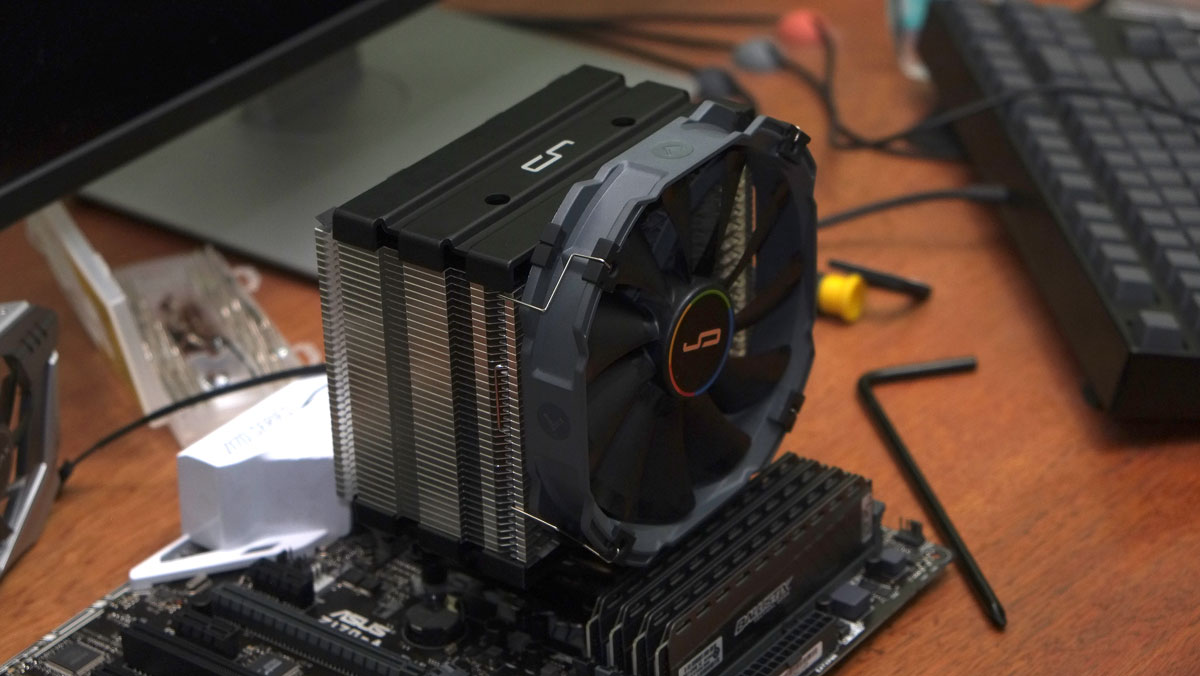Introduction
When it comes to keeping your computer cool, a crucial component is the CPU cooler. The CPU, or Central Processing Unit, generates a significant amount of heat while running, especially during resource-intensive tasks such as gaming or video rendering. Without proper cooling, the CPU can overheat, leading to performance issues and potentially causing long-term damage.
To address this issue, computer enthusiasts and gamers rely on CPU coolers to dissipate the heat effectively. These cooling devices come in various types, each with its own set of features and benefits. However, one particular type of CPU cooler stands out for its efficiency in heat dispersion – the one that utilizes heat pipes.
Heat pipes are a component commonly found in CPU coolers that excel in heat transfer. They are thin, sealed copper tubes filled with a small amount of working fluid, usually water or a refrigerant. These heat pipes employ a passive cooling method and rely on principles of thermodynamics to transfer heat from the CPU to the radiator, where it can be dissipated.
In this article, we will explore the types of CPU coolers available in the market and focus on the ones that contain heat pipes. We will discuss the advantages and drawbacks of using CPU coolers with heat pipes, helping you make an informed decision when selecting the right cooler for your CPU.
Before diving into the specifics, it is important to understand why heat pipes are utilized in CPU coolers and the benefits they offer. So, let’s unravel the science behind heat pipes and delve into the world of CPU coolers with heat pipe technology!
What are CPU coolers?
Before we dive into the details of CPU coolers that contain heat pipes, let’s first understand what CPU coolers are and why they are essential for every computer system.
A CPU cooler is a device specifically designed to regulate the temperature of the CPU. The CPU is the brain of the computer and performs all the complex calculations and operations that make your system function. However, this high level of processing power also generates a significant amount of heat. If left uncontrolled, this heat can cause the CPU to overheat, leading to reduced performance, system instability, and even permanent damage.
CPU coolers are responsible for dissipating this heat, ensuring that the CPU operates within its optimal temperature range. They consist of a heatsink, a fan or fans, and a mounting mechanism. The heatsink is a block of metal, usually made of aluminum or copper, which absorbs the heat from the CPU. The fan(s) then helps to move the air across the heatsink, carrying the heat away and cooling the metal. The mounting mechanism securely attaches the cooler to the CPU.
There are two main types of CPU coolers: air coolers and liquid coolers. Air coolers use the principle of convection to cool the CPU. The heatsink’s large surface area allows for greater heat dissipation, while the fan(s) ensures a constant flow of cool air. Liquid coolers, on the other hand, rely on a closed-loop system to transport heat away from the CPU. They use a combination of a water block, pump, radiator, and fans to regulate the CPU’s temperature.
Both air coolers and liquid coolers have their advantages and limitations. Air coolers are generally more affordable and easier to install, while liquid coolers offer better cooling performance and a quieter operation. However, both types can benefit from the addition of heat pipes, which enhance their heat transfer capabilities and improve overall cooling efficiency.
Now that we have a basic understanding of CPU coolers, it’s time to take a closer look at the vital component that sets some coolers apart – heat pipes.
What are heat pipes?
Heat pipes are a critical component found in many CPU coolers, helping to enhance the cooling efficiency and performance of the cooling system. These ingenious heat transfer devices were initially developed for aerospace applications but have since transitioned into various industries, including computer cooling.
A heat pipe is a sealed copper tube filled with a small amount of working fluid, such as water or a refrigerant. The inner walls of the pipe are lined with a capillary wick structure, often made of porous metal or sintered powder. This wick structure helps facilitate the movement of the working fluid through the pipe.
The working principle of a heat pipe relies on the principles of thermodynamics, particularly the phase change of the working fluid. When the CPU heats up, the working fluid inside the heat pipe vaporizes, absorbing the heat in the process. The vapor then moves towards the cooler end of the pipe, where it comes into contact with the cooler air or the fins of the heatsink.
As the vapor contacts the cooler surface, it condenses back into a liquid, releasing the absorbed heat. The condensed liquid then flows back to the hot end of the pipe through the capillary wick structure, driven by capillary action and gravity. This continuous cycle of evaporation, condensation, and liquid flow allows the heat pipe to efficiently transfer heat away from the CPU to the cooler end.
Heat pipes offer several advantages over traditional cooling methods. Firstly, they have an exceptionally high thermal conductivity, often several times greater than that of copper or aluminum. This means they can transfer heat more effectively and quickly, minimizing temperature build-up and reducing the risk of thermal throttling.
Secondly, heat pipes are extremely efficient in distributing heat evenly across their length. This ensures that hotspots on the CPU are effectively cooled, avoiding localized overheating and potential damage to the processor. Additionally, as heat pipes rely on passive cooling methods, they operate silently without the need for additional fans or pumps, making them ideal for users who prioritize noise reduction.
In the next section, we will explore why heat pipes are specifically used in CPU coolers and the benefits they bring to the table in terms of improving cooling efficiency and performance.
Why are heat pipes used in CPU coolers?
Heat pipes are used in CPU coolers for several compelling reasons. These innovative devices offer numerous advantages that make them highly effective in enhancing the cooling capabilities of CPU cooling systems.
One of the primary reasons heat pipes are used in CPU coolers is their exceptional ability to transfer heat. As mentioned earlier, heat pipes have a much higher thermal conductivity than traditional materials like copper or aluminum. This enables them to transport heat more efficiently and quickly, ensuring that the CPU temperature remains within a safe operating range.
Moreover, heat pipes excel in distributing heat uniformly across their length. This is critical in CPU cooling, as it helps prevent hotspots from forming on the processor. Hotspots can lead to temperature imbalances and potential performance issues. By utilizing heat pipes, CPU coolers can effectively deliver the heat from the CPU to the cooler end, ensuring consistent cooling and protecting the CPU from damage caused by excessive heat.
Another advantage of using heat pipes in CPU coolers is their passive cooling nature. Unlike some cooling methods that require additional fans or pumps, heat pipes rely on natural heat transfer mechanisms. This means they do not contribute to the overall noise levels of the system. For users who prioritize a quiet computing environment, CPU coolers with heat pipes provide an excellent solution.
In addition to their superior heat transfer capabilities and quiet operation, heat pipes also offer excellent thermal efficiency. The small amount of working fluid inside the heat pipe vaporizes at low temperatures, aiding the overall heat dissipation process. This low-temperature evaporation ensures that even tiny amounts of heat energy can be efficiently carried away from the CPU, resulting in improved cooling efficiency and a cooler-running system.
Furthermore, heat pipes are reliable and durable components. They are sealed to prevent leakage, ensuring the long-term performance of the CPU cooler. Additionally, the absence of moving parts in heat pipes reduces the risk of mechanical failure, resulting in a more stable and maintenance-free cooling solution.
Overall, the use of heat pipes in CPU coolers provides significant benefits in terms of superior heat transfer, uniform distribution of heat, passive cooling operation, thermal efficiency, and reliability. These advantages make CPU coolers with heat pipes an excellent choice for users looking to optimize their cooling performance and maintain the longevity of their CPU.
Types of CPU coolers
When it comes to cooling your CPU, there are various types of CPU coolers available in the market, each with its own design and cooling mechanism. Understanding the different types can help you choose the right cooler that suits your needs and budget.
1. Air Coolers: Air coolers are the most common and affordable type of CPU cooler. They consist of a heatsink made of aluminum or copper fins, which absorb and distribute heat away from the CPU. A fan or fans attached to the heatsink then help to dissipate the heat by blowing cool air across the fins. Air coolers come in different sizes, with larger ones offering better cooling performance.
2. All-in-One (AIO) Liquid Coolers: AIO liquid coolers provide more efficient cooling compared to air coolers. They consist of a water block with a built-in pump, tubes, and a radiator with fans. The water block is attached to the CPU, and the liquid absorbs the heat from the processor. The heated liquid then flows through the tubes to the radiator, where it is cooled by fans before returning to the water block. AIO liquid coolers offer better cooling performance and a sleeker appearance, but they are generally more expensive than air coolers.
3. Custom Liquid Cooling: Custom liquid cooling is the most advanced and expensive cooling solution. It involves creating a custom loop with a reservoir, pump, water blocks for the CPU and other components, radiators, and fans. Custom liquid cooling provides excellent cooling performance and allows for more customization, but it requires more knowledge and effort to set up compared to air coolers or AIO liquid coolers.
4. Low-Profile Coolers: Low-profile coolers are designed for small form factor cases or systems with space constraints. These coolers are shorter in height and have a compact design while still providing adequate cooling for CPUs.
5. Passive Coolers: Passive coolers are fanless CPU coolers that rely solely on heat sinks to dissipate heat. They are suitable for low-power processors or situations where silence is a top priority. Passive coolers are efficient and maintenance-free, but they may not provide sufficient cooling for high-performance CPUs.
Each type of CPU cooler has its advantages and limitations. Consider factors such as your budget, case size, cooling requirements, and noise preferences when choosing the right CPU cooler for your system. Now that we have explored the different types of CPU coolers available, let’s shift our focus to CPU coolers that utilize heat pipe technology.
CPU coolers that contain heat pipes
Heat pipes have become a popular and effective technology integrated into CPU coolers to enhance their cooling performance. Several CPU coolers on the market utilize heat pipes as a key component to optimize heat transfer and improve overall cooling efficiency.
One common type of CPU cooler that incorporates heat pipes is the heat pipe tower cooler. These coolers feature a tower-shaped heatsink with multiple heat pipes running through it. The heat pipes are in direct contact with the CPU, efficiently absorbing and transferring heat to the heatsink. The large surface area of the heatsink, coupled with the effective heat transfer of the heat pipes, allows for efficient heat dissipation, ensuring that the CPU remains at optimal temperatures.
Another type of CPU cooler that makes use of heat pipes is the heat pipe-based all-in-one (AIO) liquid cooler. While AIO liquid coolers primarily rely on liquid cooling, they often incorporate heat pipes into their design to enhance heat transfer. These heat pipes can be integrated into the water block or used to connect the water block to the radiator, improving the thermal efficiency of the liquid cooling system.
Some CPU coolers utilize vapor chamber technology, which is an advanced variation of heat pipe technology. Vapor chamber CPU coolers consist of a flat, thin chamber filled with a small amount of working fluid that vaporizes and condenses, similar to a heat pipe. This vapor chamber is in direct contact with the CPU, allowing for efficient heat spreading across the chamber’s surface. The heat is then dissipated by a heatsink or radiator, often accompanied by fans. Vapor chamber coolers offer exceptional thermal performance and are commonly found in high-end cooling solutions.
The integration of heat pipes in CPU coolers brings several benefits. Firstly, they significantly enhance the heat transfer capabilities of the cooler, leading to better cooling performance and lower CPU temperatures. The ability of heat pipes to distribute heat evenly across the cooler’s surface helps prevent hotspots and ensures efficient cooling throughout the CPU.
Secondly, CPU coolers with heat pipes often provide quieter operation compared to traditional cooling methods. The passive cooling nature of heat pipes reduces the need for additional fans or pumps, resulting in a more silent computing experience.
Lastly, CPU coolers that utilize heat pipes are typically more reliable and durable. The sealed nature of heat pipes ensures that there is minimal risk of leakage or component failure, enhancing the longevity of the cooler.
Overall, CPU coolers containing heat pipes offer superior cooling performance, quieter operation, and increased reliability. These coolers are ideal for users who require efficient cooling for high-performance CPUs, such as gamers, content creators, or overclockers. Now that we have covered CPU coolers with heat pipes, let’s explore the benefits and drawbacks associated with their use.
Benefits of CPU coolers with heat pipes
CPU coolers that utilize heat pipes bring several advantages that make them a popular choice among computer enthusiasts and gamers. Let’s explore some of the key benefits of using CPU coolers with heat pipes.
1. Enhanced Cooling Performance: Heat pipes significantly improve the heat transfer capabilities of CPU coolers, allowing for more efficient cooling. The high thermal conductivity of heat pipes enables them to quickly and effectively transport heat away from the CPU. This results in lower CPU temperatures, reducing the risk of thermal throttling and improving overall system stability and performance.
2. Even Heat Distribution: Heat pipes excel at evenly spreading heat across the surface of the cooler. This is especially important for CPUs with multiple cores or those that generate a concentrated amount of heat in specific areas. By distributing heat evenly, CPU coolers with heat pipes prevent hotspots, ensuring that the entire processor receives effective cooling and minimizing the risk of damage due to thermal imbalances.
3. Quiet Operation: The passive cooling nature of heat pipes eliminates the need for additional fans or pumps, leading to a quieter computing experience. With less noise generated from the CPU cooler, users can enjoy a more peaceful and immersive computing environment, especially during intensive tasks or gaming sessions.
4. Longevity and Reliability: CPU coolers with heat pipes are built to be durable and robust. The sealed design of the heat pipes minimizes the risk of leakage and ensures long-term performance. Additionally, the absence of moving parts reduces the likelihood of mechanical failure, making heat pipe coolers a reliable cooling solution that requires minimal maintenance.
5. Compatibility and Size: CPU coolers with heat pipes come in various sizes and configurations, making them compatible with different types of computer cases and motherboard socket types. Whether you have a compact mini-ITX build or a high-end gaming rig, there is a wide range of heat pipe coolers available to fit your specific requirements.
6. Aesthetics: Many heat pipe CPU coolers feature aesthetically pleasing designs with stylish heat sinks and heat pipe arrangements. These coolers not only provide excellent cooling performance but also add a visually appealing element to your computer build. They can enhance the overall look and feel of your system, especially if you have a transparent side panel or a custom PC case with a window.
In summary, CPU coolers with heat pipes offer enhanced cooling performance, even heat distribution, quieter operation, longevity, compatibility, and aesthetic appeal. If you prioritize efficient cooling and a reliable system, opting for a CPU cooler with heat pipes can provide significant benefits for your computer setup. Now, let’s explore some of the potential drawbacks associated with CPU coolers with heat pipes.
Drawbacks of CPU coolers with heat pipes
While CPU coolers with heat pipes offer numerous benefits, it’s important to consider some of the potential drawbacks associated with their use. Let’s explore a few of these limitations:
1. Size and Compatibility: CPU coolers with heat pipes often have larger dimensions compared to stock coolers or low-profile coolers. This can pose compatibility issues, especially for small form factor cases that have limited space. It’s important to ensure that your case and motherboard can accommodate the size of the cooler before making a purchase.
2. Cost: CPU coolers with heat pipes, especially those with advanced designs and superior cooling performance, tend to be more expensive compared to basic cooler options. Users on a tight budget may find it challenging to invest in high-end heat pipe coolers. It’s crucial to consider the cost-benefit ratio and align it with your cooling requirements and financial constraints.
3. Weight: The additional weight of CPU coolers with heat pipes can exert stress on the motherboard. This is particularly important to consider if you plan to transport your system frequently or if you have a vertically oriented case setup. It’s advisable to ensure that the motherboard and case are structurally capable of handling the weight to avoid any potential damage.
4. Clearance Issues: The larger heatsinks and heat pipes of CPU coolers with heat pipes may create clearance issues with other components, such as RAM modules or PCIe slots. It’s essential to verify the compatibility and clearance specifications of the cooler with your specific motherboard and case to avoid any conflicts.
5. Limited Cooling Potential: While heat pipes enhance the cooling efficiency of CPU coolers, their effectiveness may have diminishing returns beyond a certain point. Extremely high-end processors or heavily overclocked CPUs may still require additional cooling measures, such as liquid cooling or custom cooling loops, to achieve optimal temperatures.
6. Maintenance Difficulties: While heat pipe coolers are generally low maintenance, they can accumulate dust and debris over time. Cleaning these coolers can be a bit more challenging compared to other types of coolers due to their intricate heat sink and heat pipe designs. Regular cleaning with compressed air or a soft brush is recommended to ensure the best performance.
It’s important to weigh these drawbacks against the benefits when considering a CPU cooler with heat pipes. Assess your specific needs, budget, and system requirements to make an informed decision regarding the type of CPU cooler that best suits your needs. Additionally, proper installation and regular maintenance can help mitigate some of these potential drawbacks and ensure the longevity and efficiency of the cooler.
Conclusion
In conclusion, CPU coolers with heat pipes have proven to be a valuable addition to computer cooling systems. These innovative coolers utilize heat pipe technology to enhance cooling performance, improve heat transfer efficiency, and maintain optimal CPU temperatures.
Heat pipes offer several benefits, including enhanced cooling performance, even heat distribution, quiet operation, increased longevity, and compatibility with different system configurations. They allow for efficient heat dissipation, minimizing the risk of thermal throttling and ensuring stable performance, especially during resource-intensive tasks like gaming and content creation.
While CPU coolers with heat pipes come with some drawbacks, such as size limitations, higher costs, and potential clearance issues, they remain a popular choice among computer enthusiasts and overclockers. It’s important to consider these limitations and assess your specific needs, budget, and system requirements when selecting a CPU cooler.
Whether you opt for an air cooler, an all-in-one liquid cooler, or a custom liquid cooling solution, incorporating heat pipe technology can significantly enhance the cooling capabilities of your CPU cooler. Performance-focused users will appreciate the superior heat transfer capabilities and reliability that heat pipes offer.
In conclusion, CPU coolers with heat pipes provide an efficient and reliable cooling solution, ensuring optimal CPU performance and prolonging the lifespan of your system. By carefully considering the benefits and drawbacks, you can make an informed decision to select the right CPU cooler with heat pipes that meets your specific requirements and suits your computing needs.







